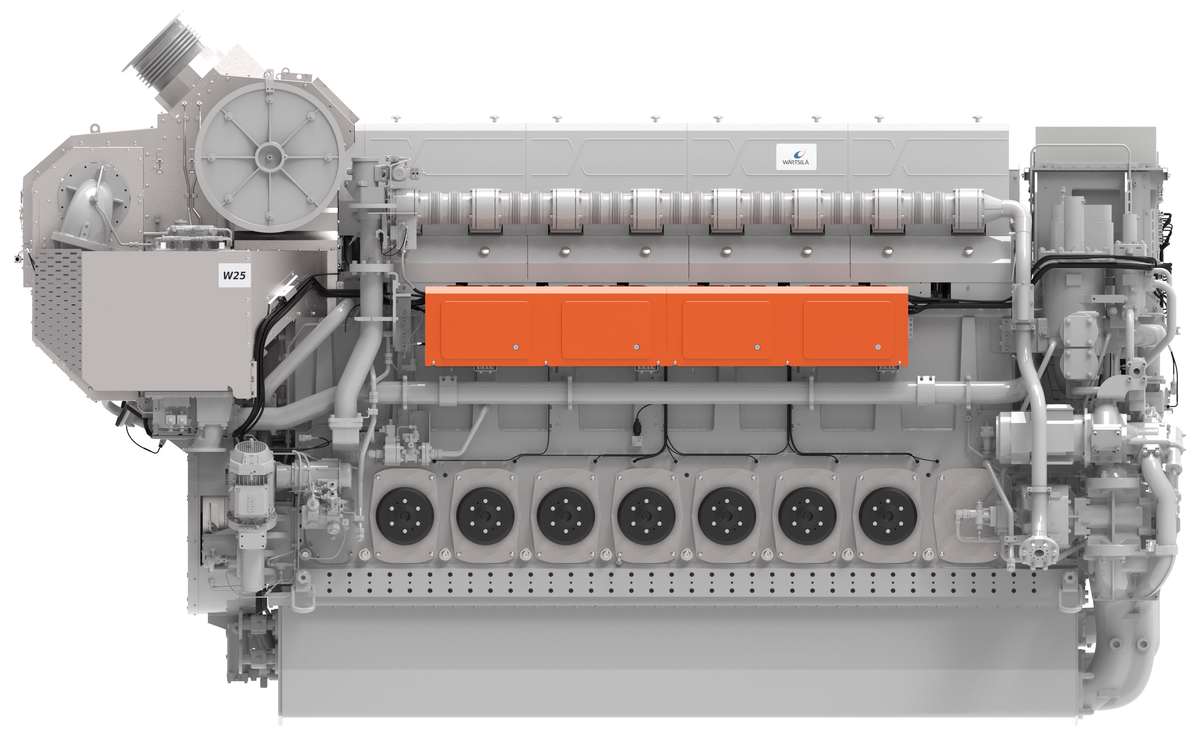Wärtsilä pioneers bunkering transition with first ammonia-fuelled ship engine
Finnish engine maker Wärtsilä has launched the industry's first ammonia-fuelled four-stroke marine engine, marking a breakthrough in the shipping industry’s green fuel transition.
 PHOTO: Model of Wärtsilä's four-stroke ammonia dual-fuel engine. Wärtsilä
PHOTO: Model of Wärtsilä's four-stroke ammonia dual-fuel engine. Wärtsilä
Ammonia-fuelled engines will help speed up the shipping sector's green fuel transition, Wärtsilä’s chief executive, Håkan Agnevall said.
In addition to ammonia, the dual-fuel engine can also operate on diesel, LNG and biofuels.
As ammonia is a hazardous and toxic substance by nature, the engine features an additional safety measure known as an "ammonia release mitigation system”. Wärtsilä explains that the system breaks down ammonia emissions into nitrogen and water and significantly reduces ammonia emissions, to less than 30 parts per million (ppm).
“In fact, in most cases NH3 emissions are close to 0 ppm,” it claims.
This system is a “green and safe alternative to venting pure ammonia, diluting it with air, or bubbling it in hazardous dirty water tanks,” according to Wärtsilä.
The first engine in the batch will be installed on one of Viridis Bulk Carriers' short-sea bulk carrier by next year.
Viridis is a joint venture between the Norwegian shipping companies Amon Maritime, Mosvolds Rederi and Navigare Logistics, and has set out to promote zero-emission shipping. It has received a green light from classification society DNV for its ammonia-fuelled short-sea bulk carrier design and intends to build a "series of ammonia-powered newbuild vessels" in the near future.
“The maritime industry must significantly reduce its emissions if we are to succeed in reaching the goals set in the Paris agreement. The adoption of new technologies and ammonia as a carbon free fuel is central to this,” said André Risholm, board member at Viridis.
Wärtsilä claims its ammonia-fuelled engine can reduce the vessel's greenhouse gas (GHG) emissions by over 70% compared to a conventional oil-fuelled engine. This could enable the vessel to meet the emission intensity-reduction targets in the EU's FuelEU Maritime regulation until 2050, and to exceed the IMO's GHG reduction target for 2040.
Need for pilot fuel
While ammonia has zero-emission potential as a fuel, ammonia-powered engines will still need a pilot fuel like diesel for ignition. This is because it burns slower than fossil fuels due to its high auto-ignition temperature.
According to expert estimates gathered by ENGINE, ammonia-powered ships could need as much 5-20% of pilot fuel to run, which would reduce ammonia's overall emission-reduction potential.
It is possible to replace diesel with biofuel or synthetic alternatives such as synthetic marine diesel oil (MDO) or dimethyl ether (DME), or even combine it with carbon capture technologies for ships. But the timeline for widespread availability of these fuels and technologies is still uncertain. This could keep vessels hooked on some degree of fossil fuels for the foreseeable future.
By Konica Bhatt
Please get in touch with comments or additional info to news@engine.online





